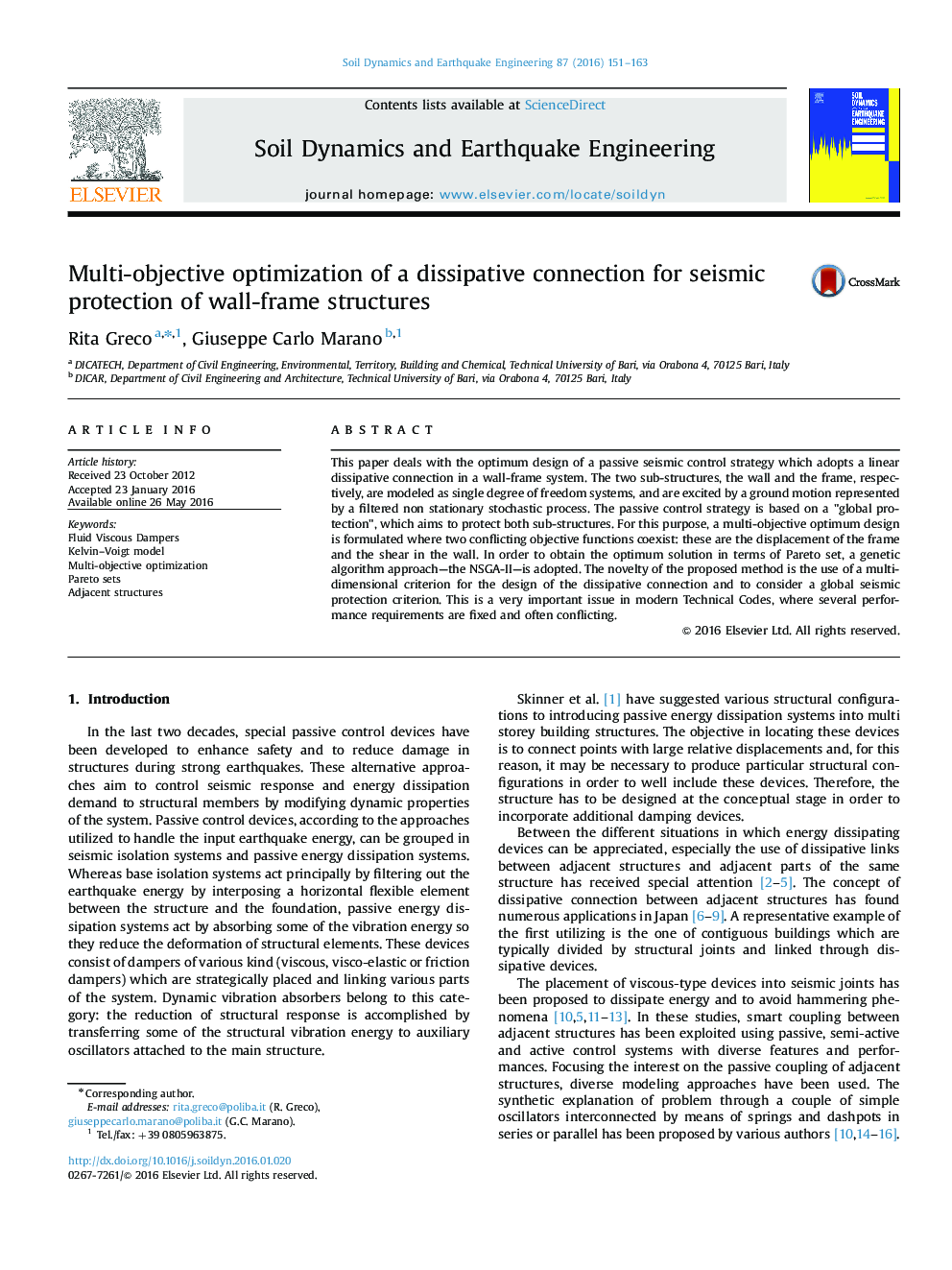| Article ID | Journal | Published Year | Pages | File Type |
|---|---|---|---|---|
| 303876 | Soil Dynamics and Earthquake Engineering | 2016 | 13 Pages |
•Optimum design of a dissipative link in a wall-frame system by Fluid Viscous Dampers.•Link and stiffness ratio between the frame and the wall are optimized.•A multi-objective strategy is adopted aimed at protecting the frame and the wall.
This paper deals with the optimum design of a passive seismic control strategy which adopts a linear dissipative connection in a wall-frame system. The two sub-structures, the wall and the frame, respectively, are modeled as single degree of freedom systems, and are excited by a ground motion represented by a filtered non stationary stochastic process. The passive control strategy is based on a "global protection", which aims to protect both sub-structures. For this purpose, a multi-objective optimum design is formulated where two conflicting objective functions coexist: these are the displacement of the frame and the shear in the wall. In order to obtain the optimum solution in terms of Pareto set, a genetic algorithm approach—the NSGA-II—is adopted. The novelty of the proposed method is the use of a multi-dimensional criterion for the design of the dissipative connection and to consider a global seismic protection criterion. This is a very important issue in modern Technical Codes, where several performance requirements are fixed and often conflicting.
